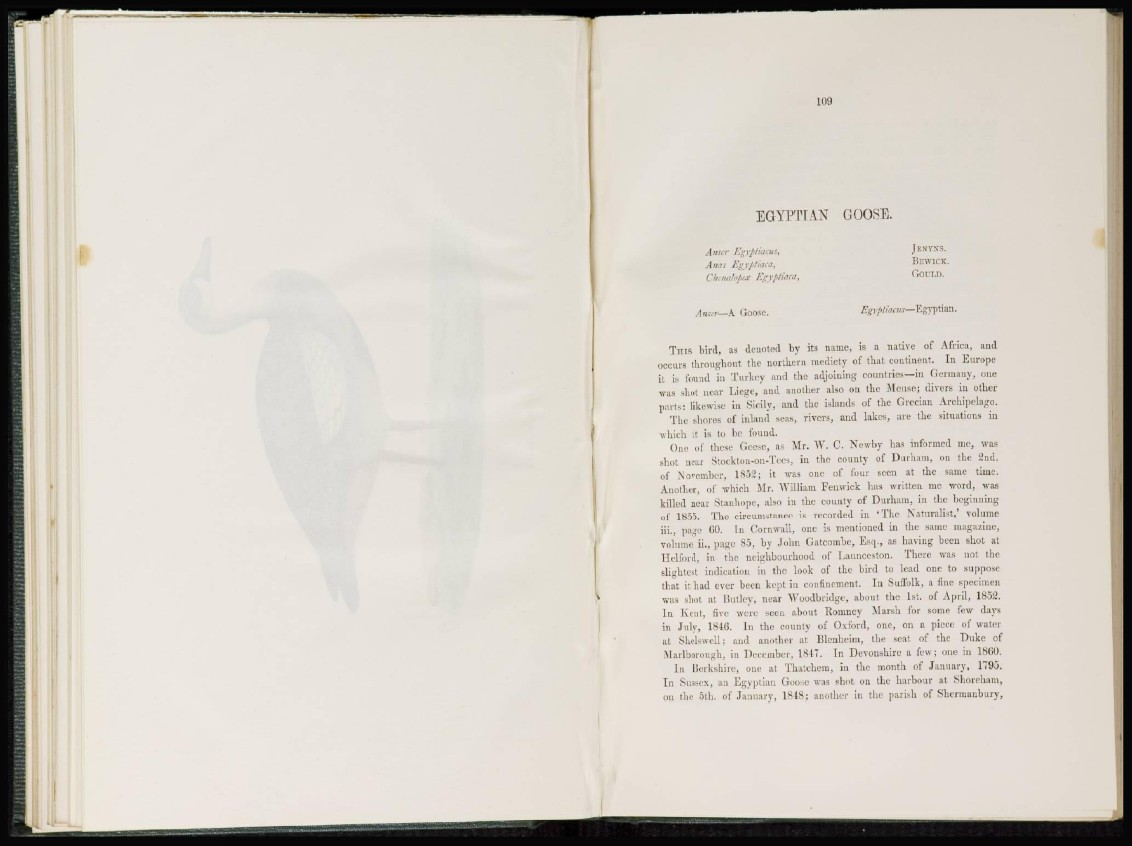
EGYPTIAN GOOSE.
Anser Egypiiacus, JBNVNS.
Anas Egyptiaea, BEWICK.
Chenalopw Egyptiaca, GOULD.
Anser—A Goose. Egyptiacus—Egyptian.
T i n s bird, as denoted by its name, is a native of Africa, and
occurs throughout the northern mediety of that continent. In Europe
it is found in Turkey and the adjoining countries—in Germany, one
was shot near Liege, and another also on the Mouse; divers in other
parts: likewise in Sicily, and the islands of the Grecian Archipelago.
The shores of inland seas, rivers, and lakes, are the situations in
which it is to be found.
One of these Geese, as Mr. W. C. Newby has informed me, was
shot near Stockton-on-Tees, in the county of Durham, on the 2nd.
of November, 1852; it was one of four seen at the same time.
Another, of which Mr. William Eenwick has written me word, was
killed near Stanhope, also in the county of Durham, in the beginning
of 1855. The circumstance is recorded in ' T h e Naturalist,' volume
iii., page GO. In Cornwall, one is mentioned in the same magazine,
volume ii., page 85, by John Gatcombe, Esq., as having been shot at
Helford, in the neighbourhood of Launceston. There was not the
slightest indication in the look of the bird to lead one to suppose
that it had ever been kept in confinement. In Suffolk, a fine specimen
was shot at Itutley, near Woodbridge, about the 1st. of April, 1852.
I n Kent, five were seen about Romucy Marsh for some few days
in July, 1846. In the county of Oxford, one, on a piece of water
at Shelswell; and another at Blenheim, the seat, of the Duke of
Marlborough, in December, 18-47. In Devonshire a few; one in 1N(J0.
In Berkshire, one at Thatchem, in the month of January, 1795.
I n Sussex, an Egyptian Goose was shot on the harbour at Shoreliam,
on the 5th. of January, 1848; another in the parish of Shcrmanbury,